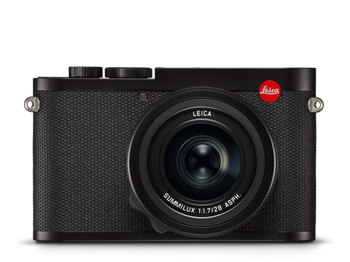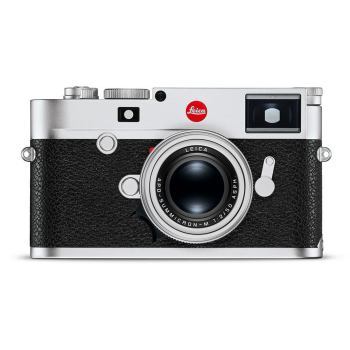- Outstanding image quality
- Compact and lightweight
- Reliable in various conditions
- Exceptional image detail
- Engaging shooting experience
- Top-notch build quality
- Fixed lens limits flexibility
- Premium price
- High cost
- No video capabilities
Leica Q2 vs Leica M10-R
When it comes to high-end photography, Leica cameras are often considered the gold standard. Two of their most popular models, the Leica Q2 and the Leica M10-R, offer exceptional image quality and unique features that set them apart from other cameras on the market. In this comparison, we'll delve into the details of each camera to help you decide which one is right for you.
Sensor and Image Quality
The Leica Q2 features a 47.3-megapixel full-frame sensor, which provides excellent image quality with high resolution and dynamic range. The sensor is designed to produce outstanding results in a variety of lighting conditions, from bright sunlight to low-light environments. In contrast, the Leica M10-R boasts a 40.9-megapixel full-frame sensor, which also delivers exceptional image quality with impressive detail and color accuracy.
While both cameras have excellent sensors, the Q2's higher megapixel count gives it a slight edge in terms of resolution. However, the M10-R's sensor is optimized for low-light performance, making it a great choice for photographers who frequently shoot in dimly lit environments.
Lens and Optics
One of the main differences between the two cameras is their lens systems. The Leica Q2 features a fixed 28mm f/1.7 Summilux lens, which is designed to provide exceptional optical quality and a wide aperture for beautiful bokeh. The lens is also incredibly compact, making the Q2 an ideal choice for street photography and travel.
On the other hand, the Leica M10-R is a rangefinder camera that uses interchangeable lenses. This means that photographers can choose from a wide range of Leica M-mount lenses, including everything from ultra-wide-angle lenses to telephoto lenses. While this provides more flexibility, it also means that the camera body is not as compact as the Q2.
Ergonomics and Handling
Both cameras have a similar design aesthetic, with a focus on clean lines, minimalism, and premium materials. However, the Q2 has a more modern and ergonomic design, with a comfortable grip and intuitive controls. The M10-R, on the other hand, has a more traditional rangefinder design, with a focus on simplicity and tactile feedback.
In terms of handling, the Q2 is slightly smaller and lighter than the M10-R, making it easier to carry around. However, the M10-R's larger size and weight give it a more substantial feel in the hand, which some photographers may prefer.
Autofocus and Performance
The Leica Q2 features a fast and accurate autofocus system, which is capable of locking onto subjects quickly and precisely. The camera also has a burst mode that can shoot up to 10 frames per second, making it well-suited for action and sports photography.
The Leica M10-R, on the other hand, uses a manual focus system, which requires photographers to use the rangefinder to focus on their subjects. While this may seem old-fashioned, many photographers prefer the tactile feedback and creative control that comes with manual focus. The M10-R also has a slower burst mode than the Q2, but it's still capable of shooting up to 4.5 frames per second.
Conclusion
Ultimately, the choice between the Leica Q2 and the Leica M10-R will depend on your individual needs and preferences as a photographer. If you're looking for a compact and versatile camera with excellent image quality, the Q2 may be the better choice. However, if you prefer the creative control and tactile feedback of a rangefinder camera, the M10-R is an excellent option.
As with any Leica cameras, both models are built to last and provide exceptional performance and image quality. Whether you choose the Q2 or the M10-R, you can be confident that you're investing in a high-quality camera that will help you take your photography to the next level.


















